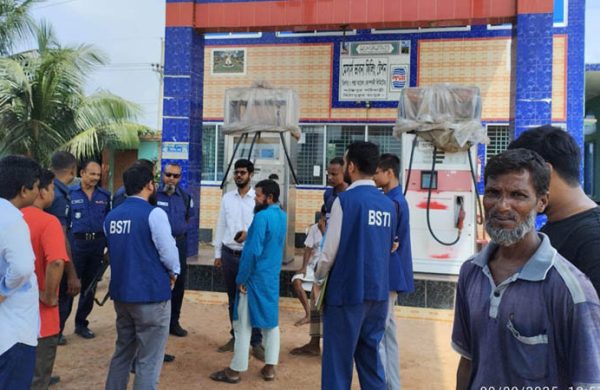Has the tiger census provided accurate figure?
- Update Time : Tuesday, October 15, 2024

TDS Desk
The results of the latest and third tiger survey in the Sundarbans, the world’s largest mangrove forest, were announced on October 8, when the number of tigers is said to be 125.
Another 21 tiger cubs could not be included in the results due to international law in this regard.
In the second survey of 2018, a total of 114 tigers were found in the forest. Between 2018 and 2024, nine carcasses were recovered from the Sundarbans. The Forest Department recovered the hides of two more tigers. However, statistics on how many tigers are born in the forest are hard to come by.
According to the status report of the third tiger survey, samples were collected with 605 cameras over a period of 318 days in three phases. Among the 31,148 images collected, there are 7,297 images of tigers. The images taken from 368 camera stations tracked 84 full-grown tigers. Among them, 21 are male and 62 are female, while the gender of the other tigers remained unknown.
Of these, 50 tigers are in Chadpai and Sharankhola ranges. There are 19 cubs, one juvenile and one almost adult. Besides, 41 full-grown tigers were found through canal surveys. In total, the number of tigers in this survey is 125. The sample area of camera trapping was 1,265km in 2015, 1,656km in 2018, and 2240km in 2024. This time, high high-quality cameras were used and as a result, the area of influence was 3,774km although the normal range was 2,240km.
Meanwhile, 114 tigers were tracked in the 2018 survey. According to sources, 11 tigers died in the forest in the last six years. Therefore, according to recent data, there are 22 more tigers currently living in the forest. However, environmentalists feel that full-age dead tigers are not taken into account, although the adult tigers have been counted.
According to the Forest Department, cameras are installed 50cm above the ground along with trees in the Sundarbans for the survey. When a tiger or any other animal passes in front of the camera, the camera automatically captures its picture and 10 seconds of video. After that, the images obtained from the camera trapping are analyzed in the resource information management system unit of the Forest Department to determine the number of tigers. Besides, all the tigers usually come to drink water in the Sundarbans canal, leaving footprints. The impression varies according to the type of tiger. Thus, the number of tigers can be counted by looking at the footprints.
According to the sources of the Forest Department, the area of the Bangladesh part of the Sundarbans is 6,017sq-km. Out of this, forest land is around 4,832sq-km and swamp land is 1,185sq-km.
On the afternoon of April 30, 2024, the body of a tiger was recovered from the Jongra Canal in the Chandpai Range. During high tide, the body of the tiger came to that part of the canal floating in the water. On the night of February 12, 2024, another tiger body was found lying in a ditch in the Kachikhali Tiger Point area. The male tiger was nine feet in length. The Forest Department said that the death of the tiger was due to old age. It weighed 255kg and was aged approximately 15 years.
On November 25, 2023, around 5pm, members of the Kanchikata patrol post recovered a tiger body without its head floating in the Raimangal River. On January 28, 2022, a male tiger carcass was found in the Ruper Gang canal area. On March 19, 2021, another tiger body was recovered from the bank of Dhanchebaria in the Bhola River. On February 3, 2020, two dead tigers were found in the forest. On August 21, 2019, another body was recovered from Chaprakhali in Cuttack Sanctuary. Besides, two hides were recovered from Fakirhat of Bagerhat on December 11, 2021, and two smugglers were arrested from the Rajoi bus stand area of Sharankhola Upazila on January 19 of the same year.
AZM Hasanur Rahman, assistant forest conservator of the Khulna Range, said: “Tiger sightings in the Sundarbans have been increasing for several years. The number of tigers in the forest has increased, and the number of deaths has also decreased.”
Forest guard of Sundarbans Kachikhali Sanctuary Mostak Ahmed said: “One morning I woke up and saw a tiger standing outside the office. I was shocked to see the tiger. I started making videos of the tiger with my mobile phone. After a while, the tiger moved towards the forest.”
Shyama Prasad Roy, officer-in-charge of the Sundarbans Patkosta patrol post, said that the tigers come from the pond behind the patrol post at night. Tigers have also been seen entering forests by swimming across rivers. Earlier, this movement of tigers in the forest could not be observed. After the Sundarbans became free of robbers, the number of tigers increased due to regular patrolling by the Forest Department.
Abu Naser Mohsin Hossain, divisional forest officer of the Sundarban West Division, said that tiger stripes are like human fingerprints and they won’t match another tiger. The latest cameras also take hundreds of pictures of each tiger. After collecting those pictures, it is possible to know exactly how many tigers are there in the Sundarbans.
He said that in 2011, a protocol was signed between Bangladesh and India for the conservation of Sundarban tigers. At that time, a memorandum of understanding was signed for the conservation of the forest as well. Notable among the protocols that were executed was the Trans-Boundary Wildlife Act. Through this, to prevent the smuggling of wild animals, including tigers, through the international border of Bangladesh and India, importance is laid on the joint patrolling initiatives of both countries.
However, since 2011, the implementation of the field-level activities has not started. If a joint patrol system could be initiated, it would have been possible to prevent the smuggling of wild animals, including tigers.
He also said that after the survey, the review work took time as well. Due to Cyclone Remal, the political situation, and internet disconnection, the process took extra time. As a result, it was not possible to announce the results on July 29, the International Tiger Day.
Mihir Kumar, conservator of forests (CF) of the Khulna region, said that the Sundarbans have been divided into four areas for the smooth operation of the survey. Due to the overall conservation management, the number of tigers in the Sundarbans has increased.
He also said that the survey showed that the number of tigers’ main prey in the forest, Chitra deer and wild boar, has also increased. As there is no shortage of food, tiger attacks on the locality have decreased. Besides, tiger forts are being built in the Sundarbans to protect tigers from storms, floods and tidal waves.
According to the Forest Department, there were 350 tigers in the Sundarbans in 1975. Then in the 1982 survey, the number increased to 425. In 1984, the number went to 430. In 1992, there were 359 tigers in the forest. Another survey conducted in 1993 found 362 tigers in the forest. This time the pugmark method was used by the surveyors.
Another survey conducted between 1996 and 1997 found 350 to 400 tigers in the forest. At that time, tiger footprints were counted. In the first camera trapping survey of 2015, the number of tigers in Bangladesh tracked 106 tigers. According to the Forests Department, 50 tigers have died between 2001 and 2018. Of these, 10 died naturally and 14 were beaten to death by local people. Another tiger was killed in 2007 during Cyclone Sidr, and 25 tigers were killed by poachers.
















